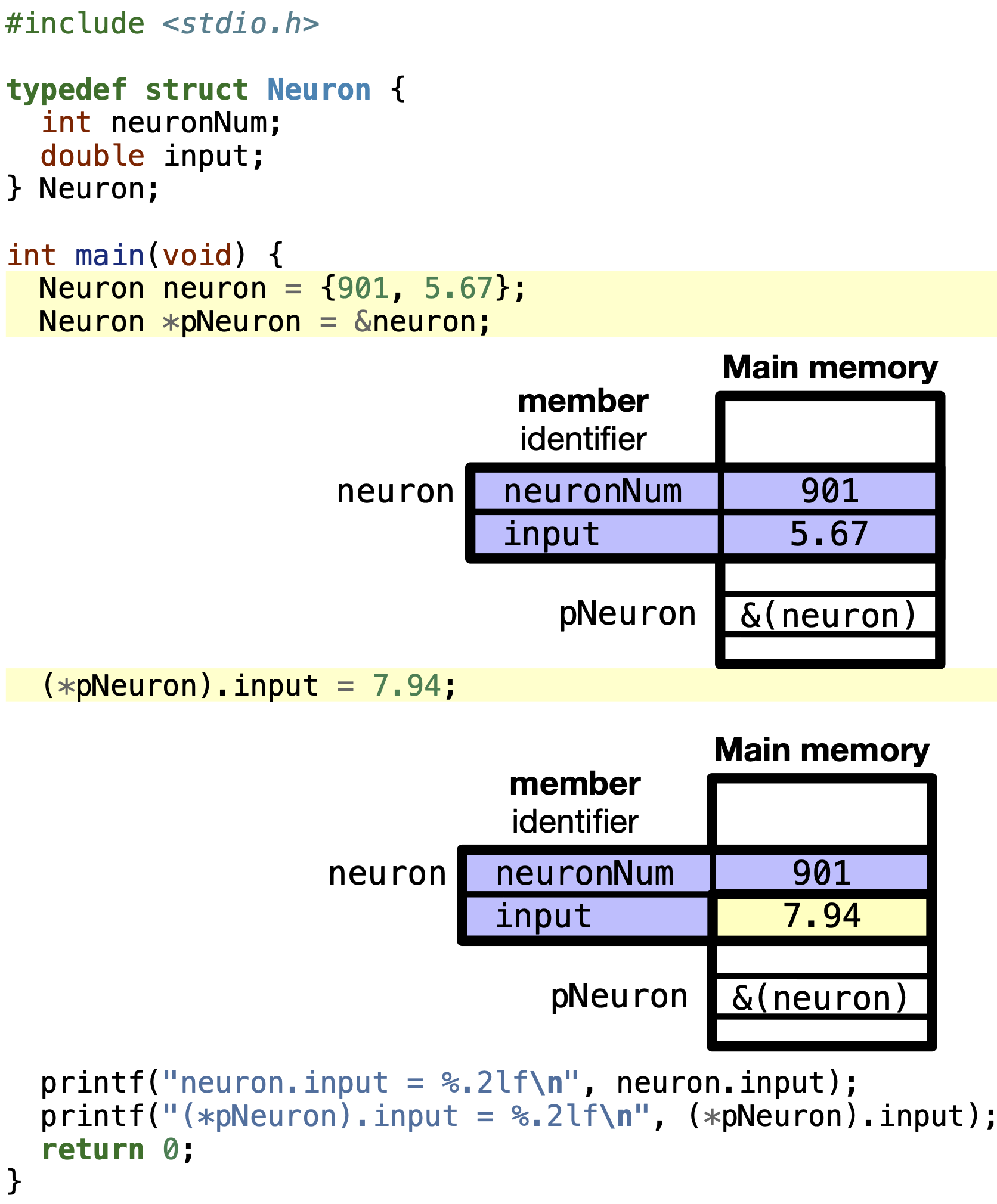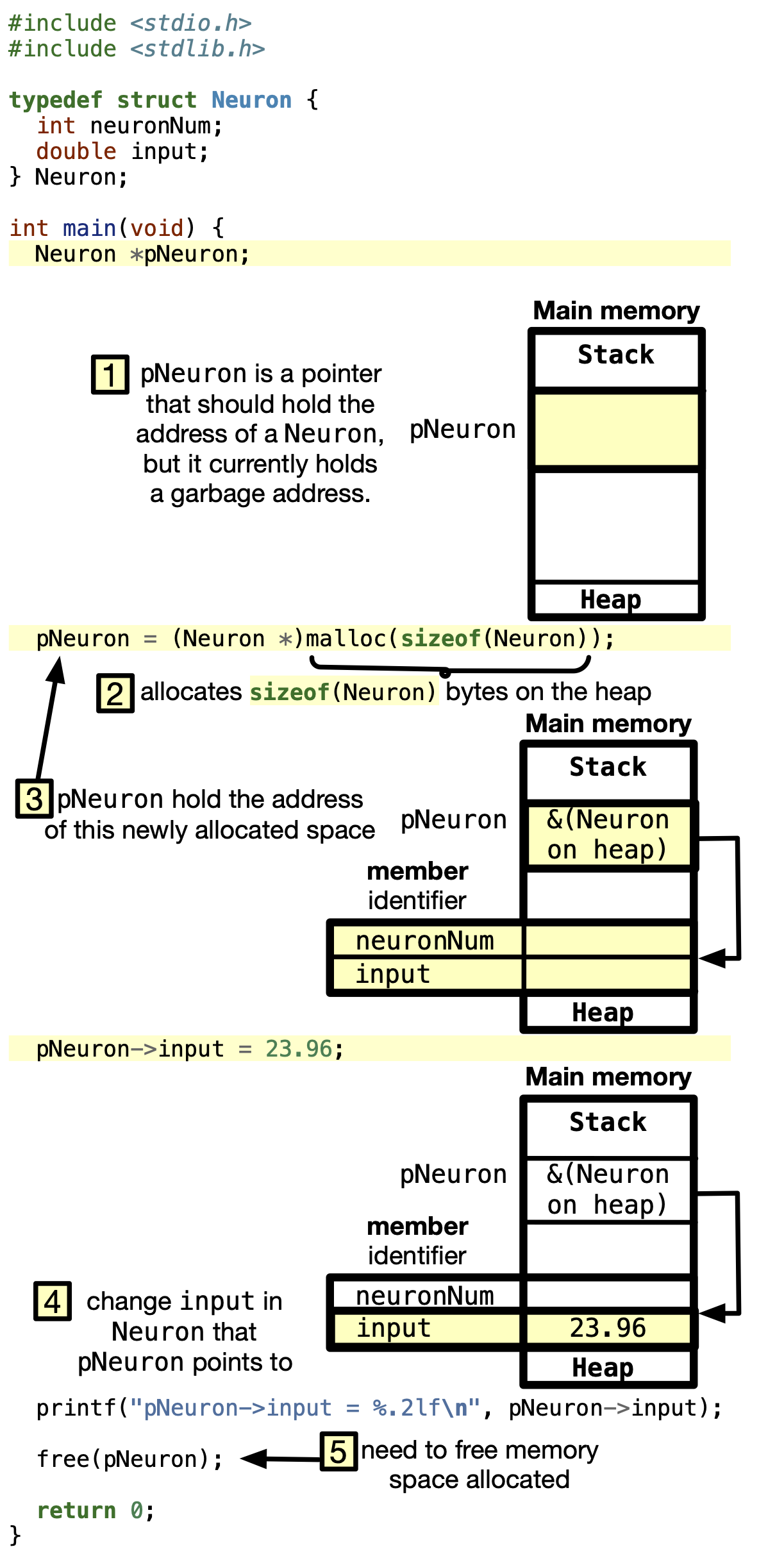Pointers to Data Structures
Contents
12.2. Pointers to Data Structures#
12.2.1. Access members of data structures through pointers#
We can have pointers to declared variables of data structures. For example, in the following code, we define a data structure struct Neuron, and create an alias for it named Neuron.
Then, we declare a variable neuron of type Neuron, and a pointer pNeuron of type Neuron *. The address of neuron is assigned to pNeuron. The following figure shows the code, the memory layout, and the output.
Code

Fig. 12.1 Pointers to data structures.#
Output
neuron.input = 7.94 (*pNeuron).input = 7.94
Arrow operator vs. dereference operator and dot operator
There are two ways to access the members of a data structure through a pointer. The first way is shown in Fig. 12.1, where we dereference pNeuron which is a pointer to neuron, then use the dot operator as usual to access the members in neuron.
(*pNeuron).input = 7.94;
The second way is where we use the arrow operator -> to access the members of neuron through pNeuron. This is equivalent to (*pNeuron).input.
pNeuron->input = 7.94; // equivalent to (*pNeuron).input = 7.94;
12.2.2. Dynamic memory allocation of data structures#
We can also dynamically allocate memory for data structures. For example, we can allocate memory for a data structure Neuron using the malloc function. The following figure shows the code, the memory layout, and the output. Download the code dynamic-mem-data-struct.c if you want to play with it.
Code

Fig. 12.2 Dynamic memory allocation of data structures.#
Output
pNeuron->input = 23.96
In the above example, the memory allocation happens on the heap through this expression (Neuron *)malloc(sizeof(Neuron)). malloc function returns the address of that allocated space on the heap. pNeuron then holds the address of that allocated space. We can then access the members of the data structure through pNeuron.
Using pNeuron -> input is equivalent to (*pNeuron).input. This accessed input member of the dynamically allocated data structure on the heap. In the above example, we set pNeuron -> input to 23.96.
When we are done with the dynamically allocated data structure, we can free the memory using the free function as we show in the above example.
The benefits/usage of data structures in solving problems will all be discussed in the next chapter on linked lists, and again in the last chapter on binary search trees.
Quiz
0 Questions
